Balustrades Guide
Everything you need to know when ordering new balustrades
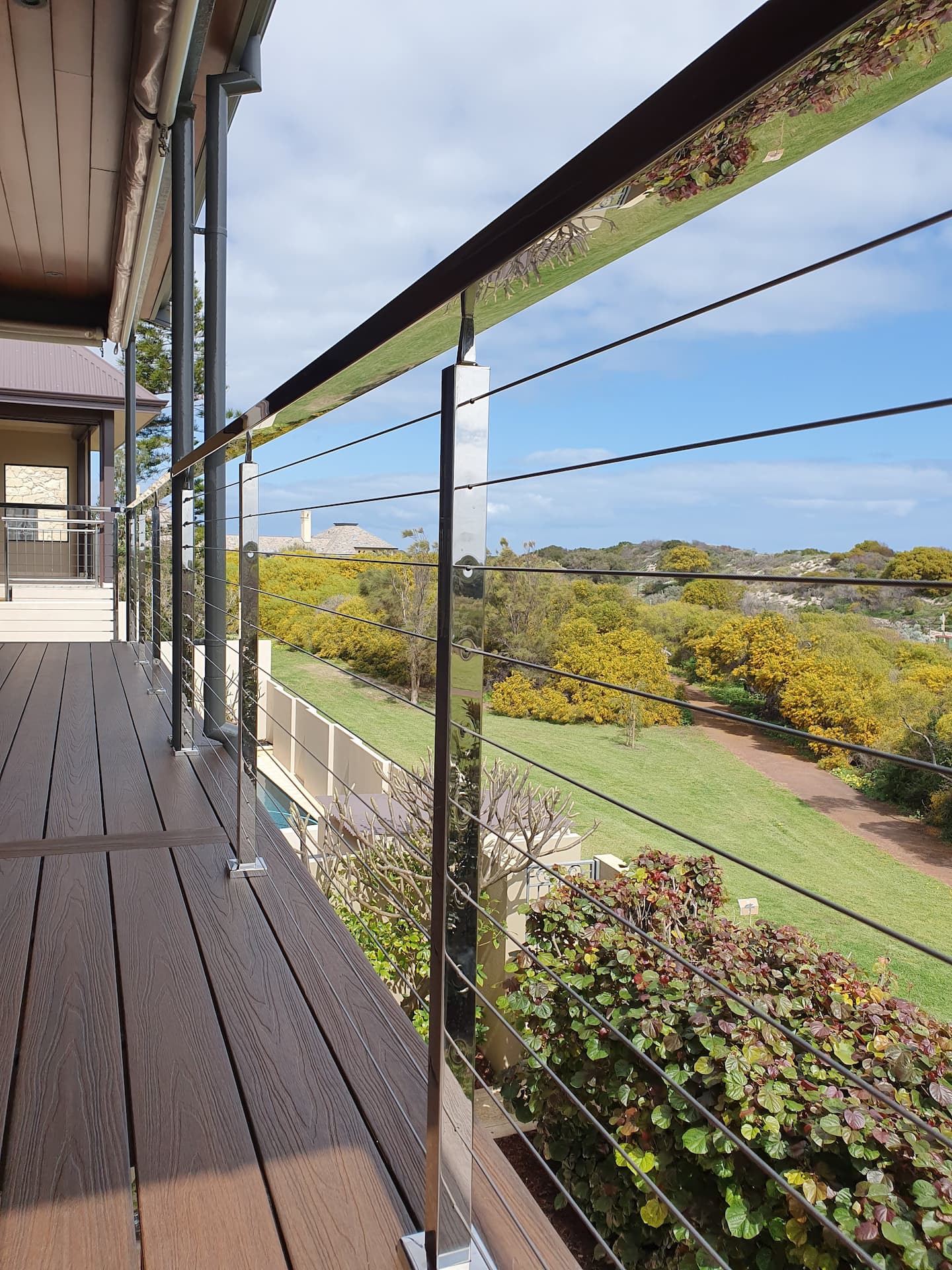
From choosing your design and materials, to complying with regulations or installation, here's everything you need to know on balustrades.
Step-by-step process
1. Design consultation meeting
To start off, we’ll have a design consultation meeting with you, where we
- define the scope of the project
- establish what style you like
- problem solve any issues
- and answer any questions you have.
If you have architectural plans, we would love to see them.
2. Taking measurements
We can measure up your site, but you can also measure yourself. If you do, keep in mind that the top of the balustrade must be at least 1 metre from the floor height, so you will need to take into account tiling or carpet thickness, etc.
If you do it yourself, please be aware that you will be responsible for the accuracy of measurements.
3. Creating a fabrication drawing
We then create a fabrication drawing, which is a detailed schematic of the design. At this point, you should feedback any changes or refinements you have on the design.
4. Design approval
5. Making your balustrades
This is where everything comes together and we turn your vision into reality. During the fabrication process, our team will prepare required components and fabricate them as per the chosen design and measurements. Then, our team completes a thorough product review for quality assurance. Depending on your choice, we can either install them, deliver them or you can pick them up.
Balustrade types
One of the biggest decisions is choosing between various types of balustrades. Your options include:
Wire Balustrades
Made from marine-grade 316 stainless steel, they are available with either round or square uprights.
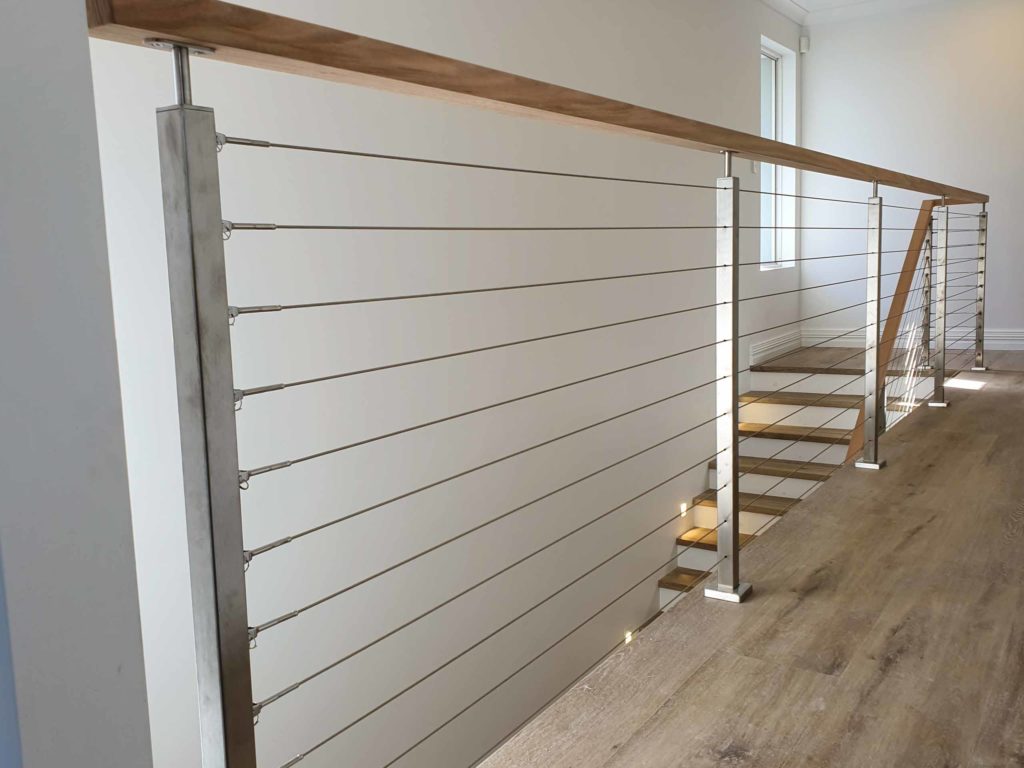
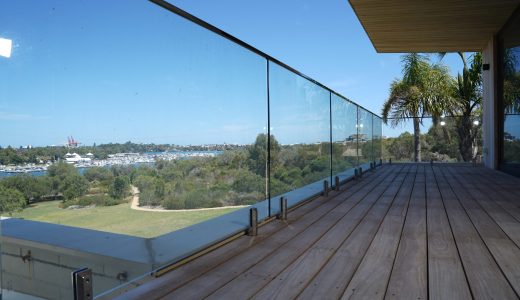
Frameless Glass Balustrades
You have the choice of a wide range of glass panels, including 12mm toughened glass or 14mm SGP glass, an opaque or frosted glass for added privacy.
Framed Glass Balustrades
Made locally from high-quality, corrosion-resistant marine-grade 316 stainless steel, they also come with your choice of round or square uprights. Again, you also choose an opaque or frosted glass for privacy.
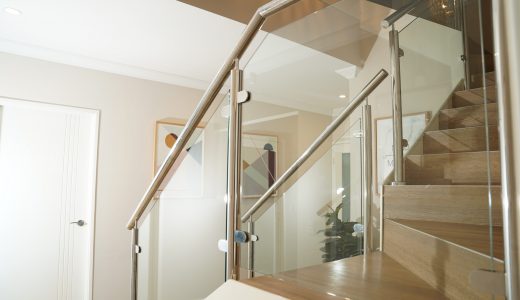
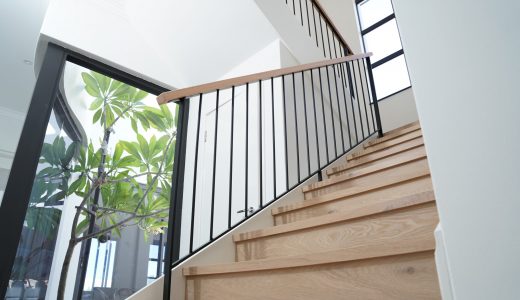
Mild Steel Balustrades
They can be either hot-dip galvanised, painted or powder coated.
Stainless Steel Balustrades
They come polished to a mirror finish, in a satin or brushed finish or they can be powder coated.
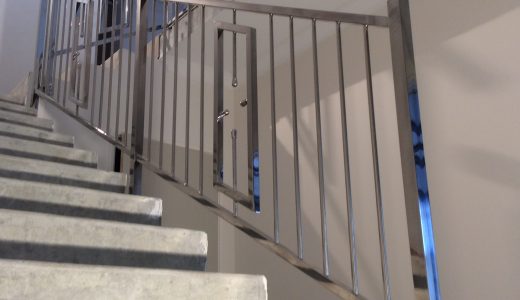
You’ll also need to choose fixings, based on the kind of balustrades you want, aesthetics and your floor strength. Your options include:
- planar bolts (minimalist stainless steel bolts for frameless glass balustrades)
- side fixed pins (bolts that attach through the bottom of the balustrades to the exterior vertical wall)
- spigots (floor mounted brackets for holding glass)
- posts or stanchions.
Next, you will need to choose from the various styles and profiles of handrails. This includes:
- top fixed handrails
- and side fixed handrails.
You will need to decide and the thickness of steel components and/or glass. For glass balustrades, we offer 12mmm toughened glass or 14mm SGP glass (an incredibly strong, laminated glass, designed to withstand storms).
Balustrade regulations & standards
The design process isn’t just about getting great looking balustrades, it’s also about ensuring your balustrades comply with BCA (Building Code Australia) regulations and state, territory, and local codes.
Balustrades are required to be installed anywhere where there is a drop of a metre or more. According to BCA regulations, balustrades must:
- be at least 1 metre high as measured from the floor (keep in mind, this must be above any tiling, etc, on the floor)
- have gaps between bars or posts of 125mm or less
- be able to withstand loads and impacts as determined by AS 1170.1
- have 100mm or less between the lowest rail and the floor
- not have horizontal elements that could be used for climbing on a balcony that has a drop of 4 metres or more to the area below.
It is important to note that these standards apply to all balustrades, old or new. And even well-made balustrades can fail to adhere to BCA standards.
Additional standards apply to balustrades in commercial and public buildings.
DIY balustrade installation
If you opt for DIY installation, we will make your balustrades in a way that it is easy to install. When installing balustrades, we suggest you follow this process to ensure the best outcome.
- Review the design plan
- Mark the installation/drilling points
- Confirm the design dimensions on the site
- Drill the required holes
- Fix glass holder or panels with chemical anchor, plugs and screws, respectively
- Install glass panels (in the case of glass balustrades)
- Maintain level and gaps between panel of the glass with the two adjustment screws
- Measure end to end handrail length and cut to exact length with 5mm tolerance
- Position the handrail in the installation area
- Connect the handrail brackets.
Maintaining your balustrades
Maintenance of your balustrades will ensure they always look great and increases their lifespan. Here are our recommendations:
- clean glass with standard window cleaner or glass cleaner
- regularly clean stainless steel parts to increase their lifespan, especially in coastal areas
- and clean powder-coated steel or painted steel with a soft brush and a mild detergent in warm water (do not use solvents).
Inspecting older balustrades
You should also periodically check your balustrades, to make sure they are still safe. We recommend you look out for:
- rotting or insect-damaged timber
- concrete cancer (or spalling) in nearby flooring (caused when steel reinforcing rusts, making concrete crack)
- rusted, corroded or loose rails, wires or fittings
- and cracked glass.
Keep in mind that faulty materials aren’t always visible to the untrained eye, so you may want to contact a building inspector or a licensed builder.
Please be aware all the information on this page is provided as an introductory guide. If you design,
fabricate, measure or install your own project, Aussie Balustrading & Stairs takes no responsibility.
Helpful Articles and Blogs
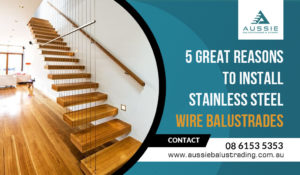
5 Great Reasons to Install Stainless Steel Wire Balustrades
A stainless steel wire balustrade is a type of railing system that is used to provide a barrier between two areas. It is typically made up of metal wires that are strung together in a grid-like pattern and suspended between two posts or columns. The wires are usually stainless steel, which is known for its strength, durability, and corrosion resistance, making it an ideal material for use in balustrades.
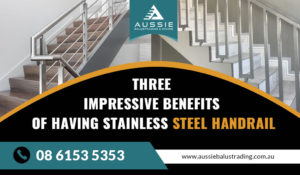
Three Impressive Benefits of Having Stainless Steel Handrail
Adding a stainless steel handrail to your home is an excellent way to add style and safety to your space. These railings are not only stylish, but they are also highly durable, making them an ideal choice for homes with children or pets. Additionally, they are easy to clean and maintain so that you can enjoy their beauty for years.

Top 9 Tips to Help You Avoid Rust on Your Steel Balustrades
As any homeowner knows, rust is the enemy of steel. Balustrades are no exception – if left untreated, rust can quickly ruin the look of your otherwise beautiful home. But don’t despair – there are a few simple steps you can take to prevent rust from taking hold of your balustrades.